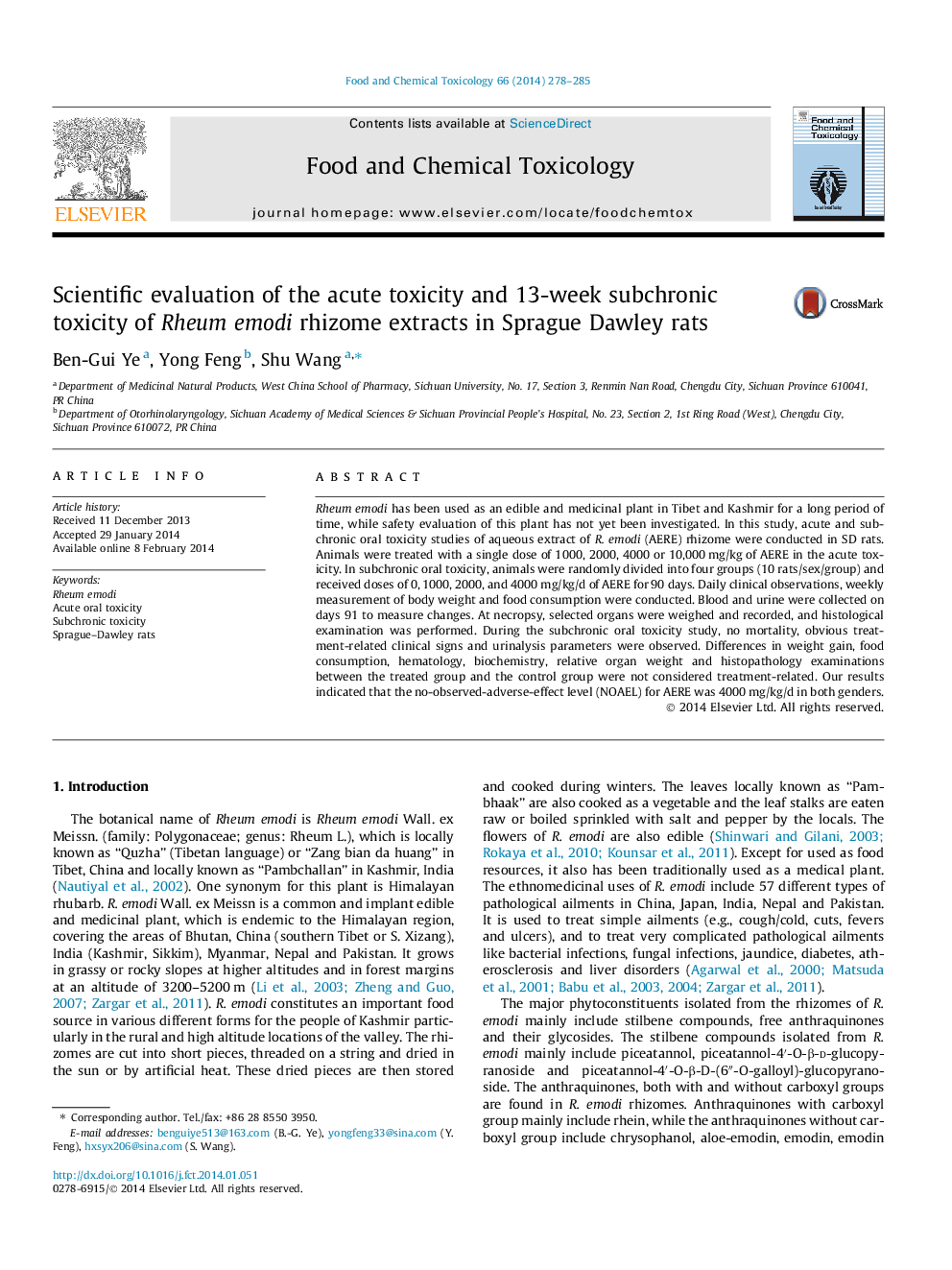| Article ID | Journal | Published Year | Pages | File Type |
|---|---|---|---|---|
| 5850762 | Food and Chemical Toxicology | 2014 | 8 Pages |
â¢Acute and subchronic oral toxicity studies of aqueous extract of Rheum emodi rhizome (AERE) were conducted.â¢The oral MTD of AERE was expected to be more than 10,000 mg/kg body weight in both sexes.â¢No AERE-treatment related toxicological changes were abserved in 13-week subchronic study.â¢The no-observed-adverse-effect level (NOAEL) for AERE was 4000 mg/kg/d in both genders.
Rheum emodi has been used as an edible and medicinal plant in Tibet and Kashmir for a long period of time, while safety evaluation of this plant has not yet been investigated. In this study, acute and subchronic oral toxicity studies of aqueous extract of R. emodi (AERE) rhizome were conducted in SD rats. Animals were treated with a single dose of 1000, 2000, 4000 or 10,000Â mg/kg of AERE in the acute toxicity. In subchronic oral toxicity, animals were randomly divided into four groups (10 rats/sex/group) and received doses of 0, 1000, 2000, and 4000Â mg/kg/d of AERE for 90Â days. Daily clinical observations, weekly measurement of body weight and food consumption were conducted. Blood and urine were collected on days 91 to measure changes. At necropsy, selected organs were weighed and recorded, and histological examination was performed. During the subchronic oral toxicity study, no mortality, obvious treatment-related clinical signs and urinalysis parameters were observed. Differences in weight gain, food consumption, hematology, biochemistry, relative organ weight and histopathology examinations between the treated group and the control group were not considered treatment-related. Our results indicated that the no-observed-adverse-effect level (NOAEL) for AERE was 4000Â mg/kg/d in both genders.
Graphical abstractDownload full-size image
